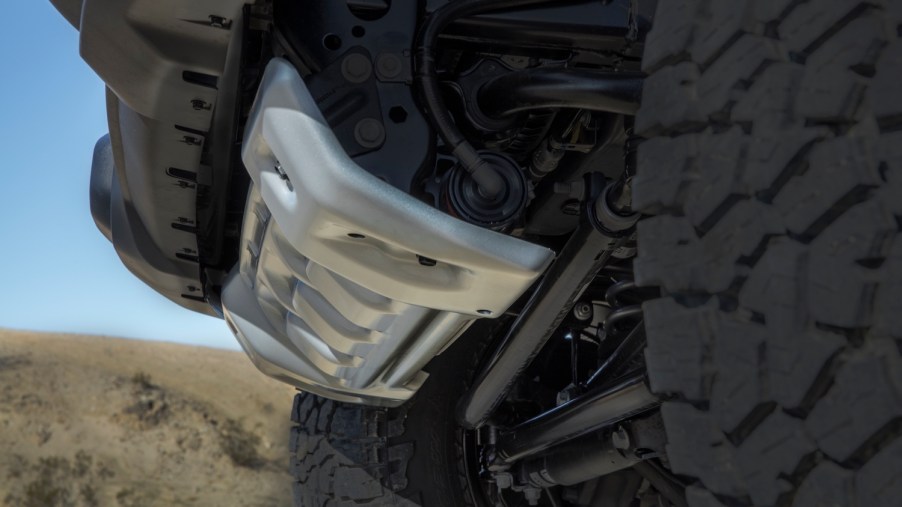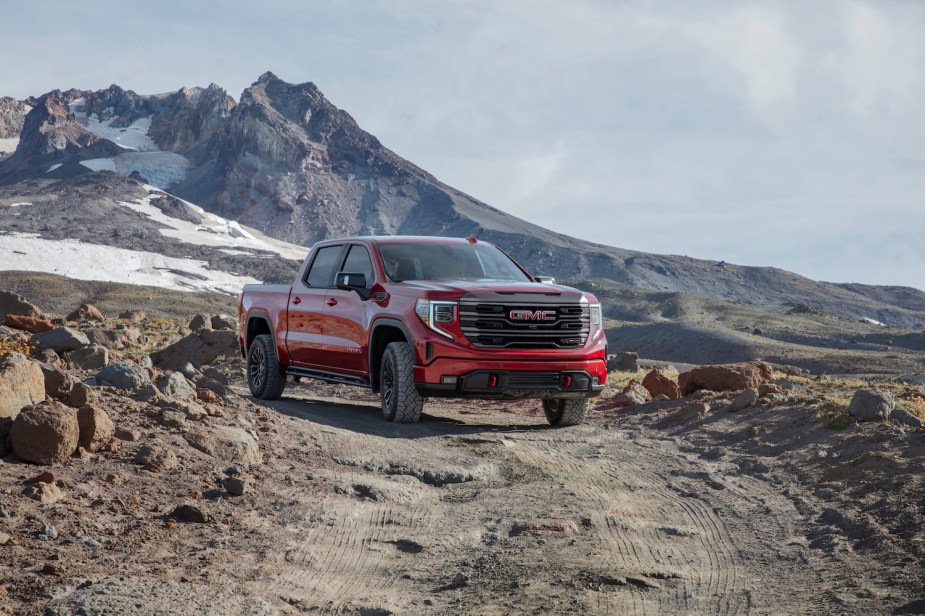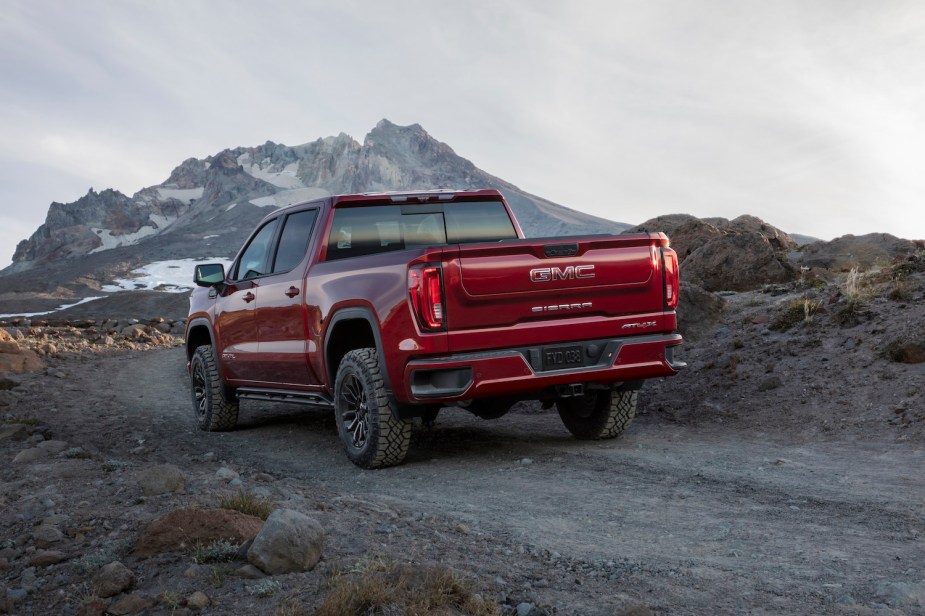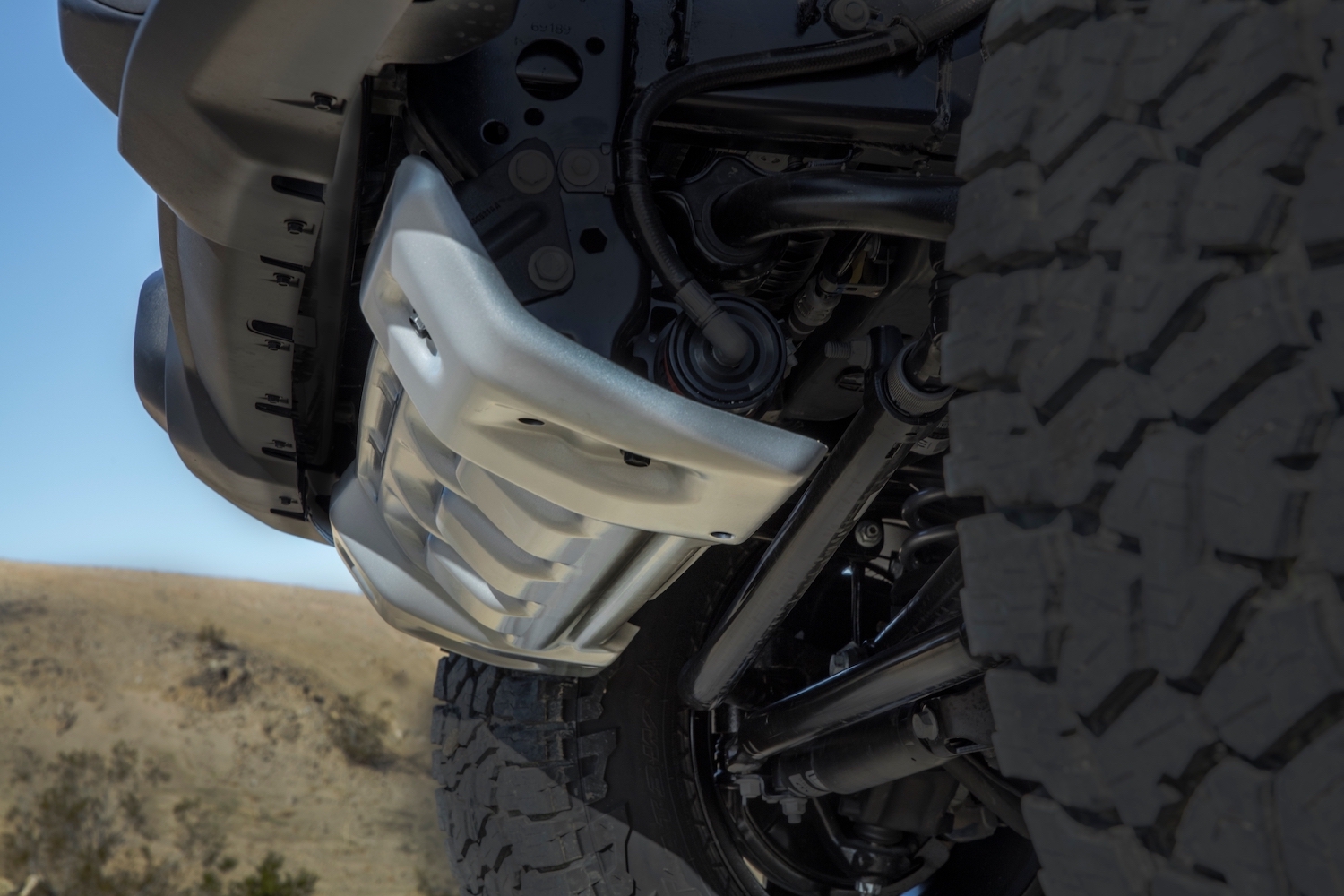
1 Full-Size American Pickup Truck Abandoned Its Solid Front Axle Altogether
For decades, 4×4 pickup trucks featured solid axles in the front and rear. Traditionalists claim this setup lasts longer and is sturdier than a more modern independent front suspension (IFS). Vehicles such as the Jeep Wrangler and most heavy-duty pickup trucks still ride on a solid front axle. But General Motors has tossed this traditional technology: every GMC Sierra and Chevrolet Silverado–no matter its load rating–has independent front suspension.
What’s so great about a solid front axle?
A solid front axle has fewer moving parts than an independent front suspension (IFS) setup. Therefore, many truck drivers claim it wears out slower, especially while hauling heavy loads. In addition, a solid front axle may be sturdier and more capable off-road.

How could a solid front axle be more capable off-road than a nimble IFS setup? When one of a solid front axle’s wheels drives up over an obstacle, the nature of the axle forces the opposite wheel down and increases traction.
In addition, many manufacturers claim their IFS setups are durable and capable off-road. But according to MotorTrend, the fact of the matter is that a solid front axle has fewer moving components so it is usually easier to work on and requires fewer spare parts.
When did General Motors swap to independent front suspension trucks?
Despite all the benefits of a solid front axle, General Motors swapped its full-size pickup trucks to an independent front suspension (IFS) system for the fourth (and final) generation of the Chevrolet C/K (in the late 1980s/early 1990s). The same change applies to the mechanically identical first-generation GMC Sierra.

General Motors rolled out this generational change across its various truck sizes over several years. For the 1988 model year, General Motors migrated all its light-duty pickups (or half ton trucks) to the new platform. This included the first GMC Sierra 1500 and the 1988 Chevrolet C/K 1500. Therefore, all 1988 and later light-duty GM pickup trucks had IFS.
General Motors continued building its heavy-duty pickup trucks (2500 and larger) on its C/K third-generation chassis for several years. Some call this generation the last “square body” or the “rounded line” era truck.
By 1992, General Motors built every heavy-duty pickup truck–both Chevies and GMCs–on its new fourth-generation chassis. This means that by 1992, every General Motors pickup truck of any size had independent front suspension.
What vehicles still offer a solid front axle?
Though General Motors has only offered independent front suspension (IFS) on its light and heavy-duty trucks since 1992, not every other automaker is the same. Heavy-duty Ram pickup trucks and Ford Super Duty F-Series trucks still feature a solid front axle.

Because solid front axles are prized by off-roaders, Jeep still builds its Wrangler on a solid front axle. Jeeps new midsize Gladiator pickup truck actually shares a drivetrain with the Wrangler. Therefore this makes the Gladiator unique as the only solid front axle light-duty truck.
Next, see a handy explanation of various suspension systems in the video below:



